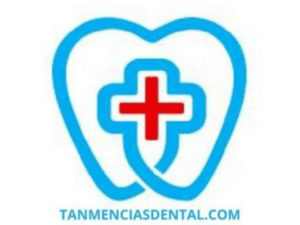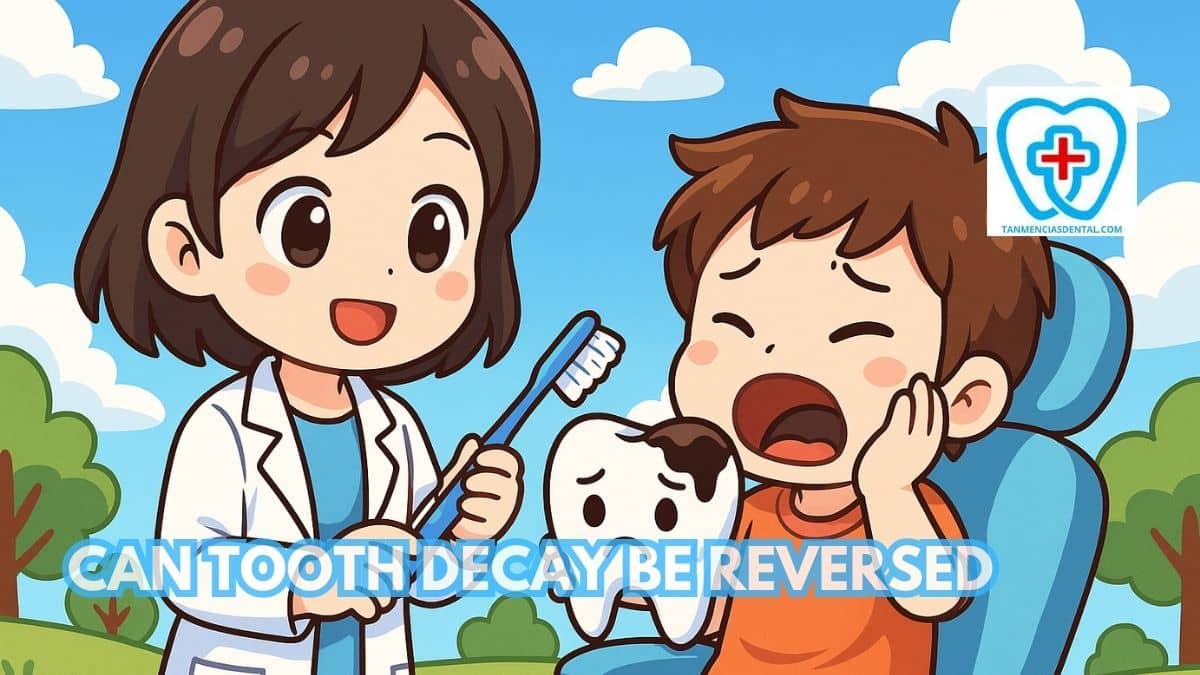Tooth decay is one of the most common oral health problems and can affect people of all ages.
It happens when bacteria in the mouth create acids that slowly damage the protective enamel of the teeth.
If not treated in time, decay can cause pain, infections, and even loss of teeth.
Many people wonder, can tooth decay be reversed, or is prevention the only way to protect a smile?
We’ll explain how decay starts, what can be done to stop or reverse it early, and which daily habits help keep teeth healthy.
1. Understanding Tooth Decay: Erosion vs. Cavities
Tooth decay begins with the erosion of the tooth enamel, the hard, outer layer that protects the teeth.
Erosion occurs when acids from food, drinks, or bacteria wear away the enamel.
If the erosion continues, it can lead to cavities, which are small holes in the teeth.
These cavities can grow larger and deeper if not treated, eventually reaching the inner layers of the tooth.
Understanding the difference between erosion and cavities is crucial for selecting the most effective prevention and treatment methods.
🦷 Why Brushing Your Teeth At Night Is More Important Than You Think
2. The Superhero Duo: Saliva & Fluoride to the Rescue!
Saliva and fluoride are essential in the fight against tooth decay.
Saliva helps neutralize acids in the mouth, wash away food particles, and provide minerals needed for enamel repair.
Fluoride, often found in toothpaste and drinking water, strengthens tooth enamel and promotes remineralization, a process that restores lost minerals to the teeth.
Together, saliva and fluoride form a powerful defense against the early stages of tooth decay.
Regular use of fluoride toothpaste and staying hydrated to maintain saliva flow are simple yet effective ways to maintain oral health.
🦷 How Long Does It Take To Treat Gingivitis?
3. Early Detection is Key: Spotting the Signs Before Trouble Starts
Detecting tooth decay early is vital for preventing severe damage.
Early signs of decay include tooth sensitivity, which can occur when consuming hot, cold, or sweet foods and drinks.
Visible pits or small holes on the surface of the teeth, as well as discoloration, are also indicators of decay.
Regular dental checkups allow dentists to identify these early signs and take appropriate action.
By addressing tooth decay in its early stages, more invasive treatments can often be avoided.
🦷 Can You Recycle Electric Toothbrushes?
4. Caries Risk Assessment: Understanding Your Decay Risk
Dentists use caries risk assessment to find out if a person is more likely to develop tooth decay.
They look at factors that increase risk, such as eating sweets often, having low saliva flow, or having harmful bacteria in the mouth.
They also check for protective factors like fluoride use, dental sealants, a healthy diet, and normal saliva flow.
By weighing these risk and protective factors, dentists can place each patient in a low, medium, or high-risk group.
This helps them decide how often someone should return for checkups and what treatments or fluoride levels may work best.
🦷 How to Choose the Best Antibacterial Toothpaste for Gingivitis That Really Works

5. Turning Back the Tide: Reversing Early Decay Through Remineralization
Reversing tooth decay in its early stages is possible through the process of remineralization.
This involves restoring lost minerals to the tooth enamel using fluoride treatments and specialized toothpaste.
Foods high in calcium and phosphorus, such as dairy products and leafy greens, also support remineralization.
Regular dental visits can provide professional fluoride treatments to strengthen enamel.
Consistently practicing good oral hygiene helps maintain the effectiveness of these treatments and keeps decay at bay.
🦷 Why Dentistry Is Important: How It Saves Lives Beyond Just Smiles
6. Brushing and Flossing: Mastering the Techniques for a Clean Sweep
Proper brushing and flossing are fundamental to preventing tooth decay.
Use a soft-bristle toothbrush and fluoride toothpaste, brushing for at least two minutes twice a day.
Ensure to brush all surfaces of the teeth, including the back teeth, which are often missed.
Flossing daily helps remove plaque and food particles from between teeth, where a toothbrush can’t reach.
Mastering these techniques is essential for maintaining a clean and healthy mouth.
🦷 Is It OK To Eat After Brushing Your Teeth?
7. Diet and Sugar Control: Keeping Your Smile Cavity-Free
Diet plays a significant role in preventing tooth decay.
Sugary foods and drinks feed harmful bacteria in the mouth, producing acids that erode enamel.
Limiting sugar intake and choosing healthier options like fruits, vegetables, and whole grains can protect your teeth.
Drinking water, especially fluoridated water, helps wash away food particles and reduces the risk of decay.
Consistently making these dietary choices supports a cavity-free smile.
🦷 Can Pediatric Orthodontists Prevent Complex Dental Problems? Early Interventions Explained
8. Beyond the Basics: Brushing Up on Additional Oral Hygiene Tools
In addition to brushing and flossing, using additional oral hygiene tools can enhance your decay prevention efforts.
Mouthwash can help reduce bacteria and freshen breath, while interdental brushes clean between teeth and around braces.
Water flossers are effective for removing debris from hard-to-reach areas, making them a great addition to your routine.
These tools provide extra protection and ensure a more thorough clean.
Incorporating them into your daily oral hygiene routine can significantly improve your dental health.
🦷 Why are My Gums Peeling After Brushing My Teeth?
9. Regular Dental Visits: Your Partner in Optimal Oral Health
Regular dental visits are essential for maintaining optimal oral health and preventing tooth decay.
Dentists can detect early signs of decay and provide professional cleanings to remove plaque and tartar buildup.
These visits also offer an opportunity for fluoride treatments and sealants, which provide additional protection against decay.
Scheduling checkups every six months ensures that any dental issues are addressed promptly.
Consistent dental care from professionals helps sustain a healthy smile and prevent serious dental problems.
🦷 How a Children’s Dentist Makes Dental Visits Fun and Stress-Free
10. When Prevention Needs Backup: Treatment Options for Advanced Decay
Sometimes, despite our best efforts, tooth decay can progress and require professional treatment.
Fillings are used to repair cavities, while crowns can restore severely damaged teeth.
Root canals are necessary when decay reaches the tooth’s pulp, removing infected tissue and sealing the tooth.
In extreme cases, tooth extraction may be required, followed by options like implants or bridges to restore function and appearance.
Early intervention with these treatments can prevent further damage and maintain oral health.
🦷 Dental Diagnostics In Marikina
11. Building a Lifetime of Healthy Smiles: Habits for Long-Term Success
Developing and maintaining good oral hygiene habits is key to a lifetime of healthy smiles.
Brushing twice daily, flossing, and using additional oral hygiene tools form the foundation of these habits.
A balanced diet low in sugar and regular dental visits further support dental health.
Educating yourself and your family about the importance of these practices ensures long-term success.
Consistently following these habits helps prevent tooth decay and promotes overall well-being.
👨⚕️ Conclusion
Tooth decay can indeed be reversed in its early stages through remineralization and good oral hygiene practices.
Using fluoride treatments, maintaining a healthy diet, and regular dental visits are effective strategies.
However, prevention remains the best approach to avoiding severe decay and expensive treatments.
Embracing preventive measures and staying proactive with dental care is essential for a healthy, decay-free smile.
By understanding and practicing these strategies, you can effectively manage and prevent tooth decay.
😊 Self-Promotion
Visit Tan-Mencias Dental Clinic in Parang, Marikina City, for top-notch dental care and a friendly atmosphere.
Our dedicated team is here to address all your dental needs with expertise and compassion.
For any questions or to schedule an appointment, you can call us at 9171451074, leave a message on our Facebook page, or contact us via our website.
We look forward to helping you achieve a healthy, beautiful smile.
Experience the difference at Tan-Mencias Dental Clinic today!
❔ FAQs
1. What are the earliest visible signs of decay that I can look for at home?
The very first visible sign of tooth decay is often a “white spot lesion.”
This appears as a chalky, dull white patch on the surface of your tooth enamel.
This spot indicates an area where minerals have been lost, which is the first step in the decay process.
At this stage, the decay is often reversible with improved oral hygiene and fluoride treatments, as the surface has not yet broken down into a cavity.
Other early signs to be aware of include increased sensitivity to sweet, hot, or cold foods and drinks.
If you notice any of these signs, it’s best to schedule a visit with your dentist.
2. How long does it take for tooth decay to become an irreversible cavity?
There is no single answer, as the speed of tooth decay varies greatly from person to person.
It can take several months or even a few years for an initial white spot to progress into a full-blown cavity that requires a filling.
However, for individuals with high-risk factors, such as a very sugary diet, poor oral hygiene, or low saliva flow (dry mouth), the process can be much faster.
The progression also depends on the location of the decay.
Because the timeline is unpredictable, it’s crucial to address the earliest signs immediately and maintain consistent preventive habits.
3. Are children more susceptible to tooth decay, and are dental sealants recommended for them?
Yes, children are often more susceptible to tooth decay for a few reasons: the enamel on their new permanent teeth isn’t as strong and mineralized as adult enamel, they may not have fully developed their brushing and flossing skills, and their diets can be higher in sugary snacks and drinks.
For this reason, dental sealants are highly recommended.
A sealant is a thin, protective plastic coating that is painted onto the chewing surfaces of the back teeth (molars).
These surfaces have deep pits and grooves where food and bacteria can easily get trapped.
Sealants act as a barrier, “sealing out” plaque and acid, thereby preventing decay from starting in these vulnerable areas.
It’s a safe, painless, and very effective preventive treatment for children and teenagers.
4. Besides sugary foods, are there other types of food or drinks that are particularly bad for my teeth?
While sugar is a primary cause of decay, other foods and drinks can also damage your teeth.
The two main categories to watch out for are:
A. Acidic Foods and Drinks
Items like citrus fruits, sodas (including diet versions), sports drinks, and wine contain high levels of acid that can directly erode tooth enamel, making it weaker and more prone to decay.
B. Starchy Foods
Foods like potato chips, crackers, and white bread break down into simple sugars in your mouth.
They also tend to become sticky when chewed, clinging to teeth and in between them for long periods, which fuels acid-producing bacteria.
A good tip is to drink water after consuming these foods or drinks to help rinse away acids and food particles.
5. If I have a cavity filled, is that tooth safe from decay forever?
No, a filling does not make a tooth immune to future decay.
A filling is an excellent way to repair damage from a cavity, but new decay, known as recurrent decay, can still form around the edges of the filling.
The margin where the filling meets the natural tooth structure can be a place where plaque accumulates if not cleaned properly.
Over time, fillings can also wear down or develop tiny cracks, creating spaces for bacteria to enter.
This is why it’s essential to continue practicing excellent oral hygiene and scheduling regular dental checkups to ensure your fillings and your natural teeth remain healthy.

